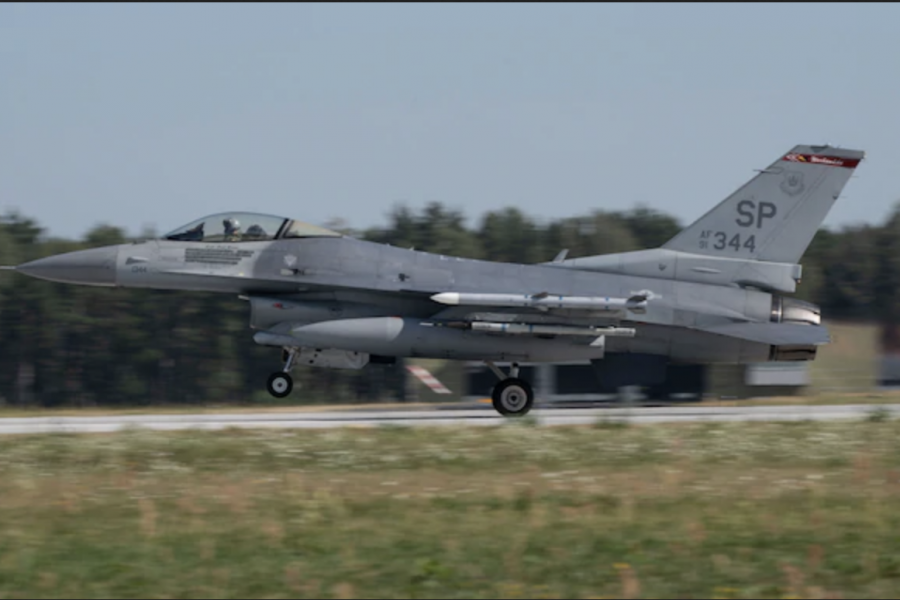U.S. and European military forces will try to push the boundaries of how the alliance responds in the face of air and missile threats during the “Astral Knight” exercise this month.
The second annual Air Force-led exercise hopes to mirror the Pentagon’s broader push to proactively connect conventional combat forces with those in space and cyberspace, using more technology like artificial intelligence and cutting bureaucratic hurdles. It’s an opportunity to more closely integrate the U.S. military as well as the vehicles and weapons owned by other countries.
According to the Pentagon, this year’s iteration of Astral Knight will bring together foreign Airmen with American Airmen, Soldiers, and Sailors to practice combat operations at Polish air bases and elsewhere in Estonia, Latvia, Lithuania, and the United Kingdom.
American and European troops will mimic deployments to set up ground-based air defenses using technologies like the Patriot surface-to-air missile system. Patriots can track and take out incoming missiles and aircraft, and allied forces can practice feeding data from a broader range of military vehicles to that radar so it can react faster.
“The exercise will enhance the combined U.S. and European task force’s ability to control defensive fires in central and Eastern Europe and refine the NATO kill chain,” the Army said of Astral Knight, which will run alongside Lithuania’s Tobruq Legacy exercise. “It will also enable the development of standard operating procedures.”
U.S. Army Europe and the 10th Army Air and Missile Defense Command are working with the Air Force to create a network of sensors that partner nations can use as well. Much of defense technology is not built to talk with other systems, and the militaries are figuring out which data translators or national and bilateral agreements they need to work better together.
“Figuring out what is available now to connect, to be able to look at sensor laydowns and build domain awareness first, is probably the quickest thing that we can offer to the [joint all-domain command and control] effort,” Brig. Gen. Adrian L. Spain, the plans, programs, and analyses director for U.S. Air Forces in Europe and Air Forces Africa, said during a Sept. 8 Mitchell Institute for Aerospace Studies event.
If all goes according to plan, the exercise could show whether European countries could act on allied intelligence and early warnings to take out a cruise missile or other threat—possibly fired by Russia or another regional adversary—that is headed for U.S. assets or the homeland itself.
“In an evolution of where we are today, we have the connections that allow us to know when a threat is about, hopefully, hours away,” Spain said. “Along the way to [the] U.S. and U.S. forces, it’s going through partner nations, and maybe there’s somebody else that can take that thing out, whatever that threat is, on the way before it ever gets close to us. But even if not, with enough advanced warning, we can disperse.”
After that point, USAFE would put its “agile combat employment” concept into action, launching teams of multiskilled Airmen who could respond to a variety of emergency situations. Agile combat employment envisions spreading forces around to smaller airfields and training them to both prepare aircraft and load munitions so pilots can take off on short notice, without relying on major military hubs in countries like England.
“The enemy … isn’t going to be able to take this low-risk, unattributable potshot at us, knowing that they have a high-degree-of-success opportunity by doing so,” Spain said. “Certainly, it can take out a pretty significant portion of forces if they get it right. If we’re able to disperse effectively, if we’re able to warn effectively, and then if we’re able to defend effectively later, all of those things cut down the percentages-of-success rate for an adversary and increase the cost for them.”
Astral Knight offers a chance to practice before the Air Force brings its Advanced Battle Management System demonstration to Europe in early 2021. ABMS is the service’s main initiative to make joint all-domain command and control a reality, using periodic experiments that try to connect the armed forces across longer distances and in increasingly complex scenarios.
The exercises come as Russian aircraft continue flying at unsafe distances from U.S. and foreign aircraft, endangering the aircrews, and as American bomber deployments in the region aim to reassure partner countries that the NATO alliance is strong.
It’s a busy time for U.S.-European training, as U.S. B-52 bombers have collaborated with Ukrainian Su-27s in a show of solidarity to deter Russian aggression, and B-52 bomber aircraft have also trained alongside Norwegian F-16 fighters. In addition, the “Noble Partner” exercise is underway in Georgia to showcase international infantry maneuvers, helicopter attack, and rotor-wing medical evacuation operations, as well as a live-fire exercise, among other events in the region.
“The bomber task force missions are going to continue to emphasize the partnerships and interoperability and integration with partner air forces, and where possible, ground forces,” Spain said. “We’ve done some work with the Navy in the Black Sea as well. That was highly effective, and certainly an opportunity for growth there. I think you’re going to see us take advantage of that as often as we can, and as often as is reasonable.”
